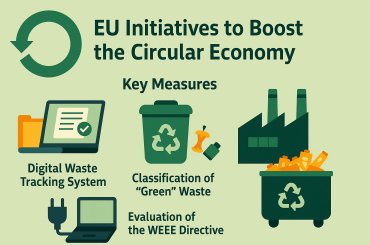 The European Commission welcomes the 24th May judgment by the Court of First Instance (Cases T-151/01 and T-289-01), dismissing in its entirety the appeal by Duales System Deutschland (DSD), in respect of the Commission's two 2001 decisions concerning an abuse of a dominant position by DSD in the market for systems for the collection and recycling of packaging waste.
The European Commission welcomes the 24th May judgment by the Court of First Instance (Cases T-151/01 and T-289-01), dismissing in its entirety the appeal by Duales System Deutschland (DSD), in respect of the Commission's two 2001 decisions concerning an abuse of a dominant position by DSD in the market for systems for the collection and recycling of packaging waste.
Duales System Deutschland (DSD) was established in 1990 in Germany to help producers and distributors fulfil their obligation to collect and recover packaging waste arising from the German Packaging Ordinance. The Green Dot became the symbol of this service. In Germany packaging marked with the Green Dot can be thrown into containers bearing this mark and then it is collected and recovered.
In 1994, European Parliament and Council Directive EK 94/62/EC on packaging and packaging waste was adopted and later implemented by all member states. Since the aim of DSD was to facilitate the marking of packaging with the Green Dot mainly to importers from other EU countries, it started to provide, through PRO EUROPE the Green Dot licence to companies that took over the obligations resulting from the Directive in other member states.
In 2001, the European Commission published two judgments (T-151/01 and T-289-01)according to which DSD abused its dominant position in the market for systems for the collection and recycling of packaging waste in Germany and the payment system for the collection of fees for packaging with the Green Dot mark disadvantages its customers and prevents the entry of competitors into the market concerned. The European Commission imposed on DSD an obligation to stop these practices. The underlying principle followed by the European Commission is “no service, no fee”. DSD appealed against these judgments.
In May 2007, the European Court of First Instance (hereinafter the “Court”) confirmed the validity of the Commission’s two 2001 decisions and rejected all DSD’s arguments. For the official translation of the press release in which the European Commission welcomed this judgment click HERE.
For the complete Court Decision T-151/01 click HERE. The decision states, among others, the following:
- The premise of the Court’s decision is that manufacturers or distributors may choose the way of fulfilling their collection and recovery obligation in respect of packaging waste. Of course, they may combine more systems for one type of packaging. German legislation does not prevent the creation of other competitive systems; quite contrary its objective is to create a healthy competitive environment.
- The Court’s decision specifies the following combined ways of fulfilling collection and recovery obligations where the client pays only for the packaging marked with the Green Dot that was recovered through DSD:
a) manufacturers or distributors are DSD system members for part of packaging of one material, for the remainder of the packaging of the same material they use another German collection system,
b) manufacturers or distributors have their own packaging waste collection and recovery system and for the packaging they can not recover they use the DSD system,
c) manufacturers or distributors are not DSD system members in Germany, but are members of the system that has the Green Dot licence in another EU member state.
- If the manufacturer or distributor uses one of the combined systems, DSD requires from its customers to mark all their packaging, even the one recovered by another system, with the Green Dot mark and to pay a fee for the use of this mark. The European Commission considers this payment system to be an abuse of a dominant position in the market and DSD may no longer charge a fee for the Green Dot mark used on the packaging that is covered by other than the DSD system.
- DSD can not request its customers to mark only the part of packaging for which they paid a fee to the DSD system. The Court admits that the selective marking of packaging discourages manufacturers and distributors from using competitors’ systems; different marking of packaging is not cost-effective and creates barriers on the market as a consequence of ever increasing costs incurred by these companies.
- The Green Dot mark is well known in many European countries. However, the Court states that with respect to the practical functioning of the packaging waste collection and recycling system, the importance of the Green Dot mark is not as high as attached by DSD. The Court states that the main function of this mark is fulfilled when it signalizes to consumers that they can recover packaging through the DSD system. However, it is up to the end consumer to decide whether the packaging ends in a Green Dot container or in a container of a competitive company, or in ordinary municipal waste. Packaging that is not marked with this symbol ends in Green Dot containers as well. The Court announces that meeting the recovery targets does not depend on the fact whether or not the packaging bears this mark, but what is important for consumers is the type of material the packaging is made of.
Neither in the Slovak Republic nor in the European Union is there a statutory obligation to mark packaging with the Green Dot. In most European countries, including Slovakia, such marking is pointless and it does not mean that packaging will be actually collected and recycled. This mark is very often mistakenly considered to be an “eco” symbol; however in Slovakia this symbol has no relevance. Toto označenie býva často mylne považované za ekoznačku, avšak u nás táto značka nemá žiadne opodstatnenie.
For the official translation of the press release in which the European Commission welcomed this judgment click HERE.
19.6.2007


